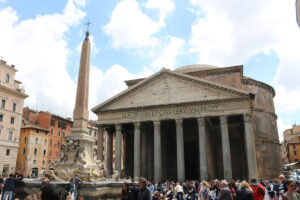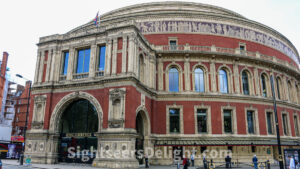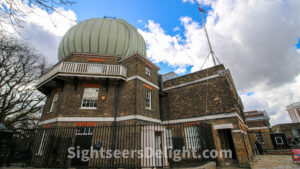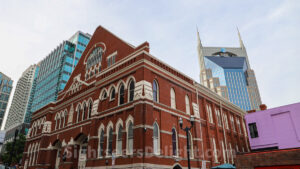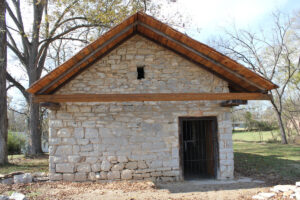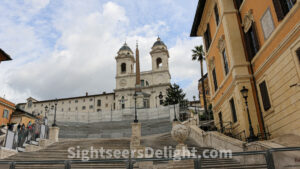Started in 27 BC, the Pantheon, built as a temple to the ancient Roman gods, is considered by many to be the glory of Rome. The building has it all, from columns to marble to monuments. Without a doubt, it is a testament to Rome’s grandeur and illustrious past.
The Roman Baths, for which this southwestern England city is named, are some of the most remarkable Roman ruins outside of Rome itself. The area’s natural hot springs were used long before the Romans under Emperor Claudius invaded Britain, starting in 43 AD. Archaeological evidence shows human activity around the springs dating to 8,000 BC, though the area may have been too hot and swampy for a permanent settlement. Today, the Roman ruins stand at the center of this historic city. Much like their counterparts in Rome itself, the bath ruins provide a marvelous insight into both the magnificence of the buildings constructed by the Romans and daily life during Roman times.
The Royal Albert Hall is a renowned concert hall in northern South Kensington, London. It is considered one of the UK’s most precious and recognizable buildings. The hall is managed by a registered charity that doesn’t receive government funding and is held in trust for the nation. It has a seating capacity of 5,272 people.
The Royal Observatory Greenwich is part of Royal Museums Greenwich, which also includes the Cutty Sark. The Royal Observatory Greenwich is home to Greenwich Mean Time and the Prime Meridian and one of the world’s most important historic scientific sites. Since its founding in 1675, Greenwich has been at the center of time and space measurement. Visitors can stand on the historic Prime Meridian line.
Thomas Ryman was a riverboat captain when he went to see popular revivalist Samuel Porter Jones address a crowd in Nashville. With plans to heckle Jones, Ryman instead emerged a changed man and decided to build a tabernacle where Jones could speak to large crowds. In the ensuing years, dozens of famed musicians, politicians and performers have appeared on the auditorium’s stage – from President Teddy Roosevelt to Harry Houdini to Charlie Chaplin. But, the “Mother Church of Country Music” is perhaps best known for its three-decade run as the host of the Grand Ole Opry. While the auditorium – located in the heart of downtown Nashville – eventually fell into a state of disrepair, this National Historic Landmark has been revitalized and transformed into one of the most famous music venues. The Ryman still regularly hosts concerts and is open during the day as a museum.
37219
A stone cabin on this site is said to be stone blockhouse of the Valentine Sevier Station. On Nov. 11, 1794, Native Americans attacked the outpost, killing six; a seventh was scalped, but recovered. Valentine Sevier was a brother of Tennessee’s first governor, John Sevier.
37042
The Spanish Steps or Scalinata di Trinità dei Monti in Italian links Piazza di Spagna and Piazza Trinità dei Monti, which is home to the church of the Santissima Trinità dei Monti or Trinità dei Monti. Francesco de Sanctis designed the staircase, which was completed in 1725.
By the 1930s, when Frank Lloyd Wright and the Taliesin Fellowship began trekking west for the winter, Wright was an established architect. Taliesin West served as the winter home and school for Wright from 1937 until his death in 1959 at the age of 91. The complex drew its name from Taliesin, in Spring Green, Wisc., which served as a summer home for Wright.
85259
The Tennessee State Capitol, home of the Tennessee legislature and the governor’s office, is a National Historic Landmark. Designed by architect William Strickland, it is one of Nashville’s most prominent examples of Greek Revival architecture. It is one of only twelve state capitols (along with those of Alaska, Delaware, Florida, Hawaii, Louisiana, Nebraska, New Mexico, New York, North Dakota, Ohio, and Virginia) that does not have a dome.
The Texas Capitol in Downtown Austin is perhaps the most recognizable state capitol building in the country. The Italian Renaissance Revival-style building stands 302.64 feet tall, making it the sixth tallest state capitol and taller than the United States Capitol in Washington. Workers laid the building’s cornerstone on March 2, 1885, Texas Independence Day. The capitol’s exterior walls are faced with red granite, which was quarried from near Burnet, Texas. Detroit architect Elijah E. Myers designed the edifice, which was completed in 1888. The building’s grounds are home to several monuments, including the Volunteer Firemen Monument and the Heroes of the Alamo Monument.
78701

